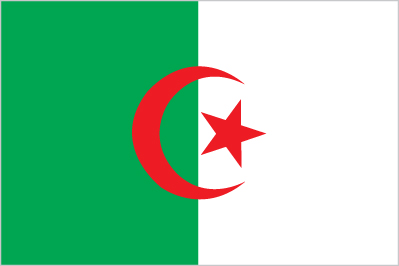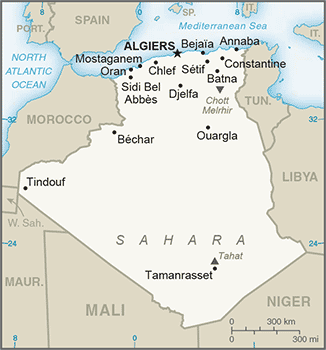Exporting to Algeria


Algeria Country Profile
Official Name (Local Language) Al Jumhuriyah al Jaza’iriyah ad Dimuqratiyah ash Sha’biyah
Capital Algiers
Population 40,263,711
Currency Algerian Dinar
GDP $168.3 billion
Languages Arabic
Phone Dial In 213
Algeria Imports Profile
Imports ($m USD) 46,053
Number of Imports Products 4,021
Number of Imports Partners 170

Algeria Economic Statistics
Government Website | https://www.mae.gov.dz/ |
| Sovereign Ratings | |
| Central Bank | Banque d’Algérie |
| Currency USD Exchange Rate | 110 |
| Unemployment Rate | 9.9% |
| Population below poverty line | 23% |
| Inflation Rate | 5.9% |
| Prime Lending Rate | 4% |
| GDP | $168.3 billion |
| GDP Pro Capita (PPP) | $15,000 |
| Currency Name | Algerian Dinar |
| Currency Code | DZD |
| World Bank Classification | Upper Middle Income |
| Competitive Industrial Performance | 87/138 |
| Corruption Perceptions Index | 112/180 |
| Ease of Doing Business | 157/190 |
| Enabling Trade Index | 121/136 |
Access trade, receivables and supply chain finance
We assist companies to access trade and receivables finance through our relationships with 270+ banks, funds and alternative finance houses.
Get StartedExporting to Algeria
Algeria’s biggest imports are food products (primarily grains, legumes, and dairy), plastics, and chemicals. Its top supplier is China, closely followed by France and Italy. As an important oil and gas exporter, Algeria also imports much of the machinery needed for gas drilling and processing. The industry has been expanding in recent years owing to increased demand from the European market after the start of the Ukraine war, leading to expanded demand for machinery. Algeria has a substantial trade surplus which is expected to stay constant or improve in the next years, especially if the hydrocarbons sector continues to benefit from public and foreign investment.
The Algerian economy is characterised by heavy bureaucracy and vested interests, and the country consistently scores lower than its neighbours in corruption and ease of doing business reports. The government has been attempting to diversify its economy and reduce unemployment by reducing imports and promoting non-hydrocarbon exports. Import substitution policies are meant to bolster domestic industries but instead severely reduce some import industries and lead to uncertainty and supply shortages. However, a change in leadership in 2020 has led to significant economic liberalisation and removal of restrictions, which could boost the long-term import climate.
Chart Showing GDP Growth Compared to rest of world
Map
Top 5 Import Partners
| Country | Trade | % Partner Share |
| China | 8,318 | 18.06 |
| France | 4,298 | 9.33 |
| Italy | 3,755 | 8.15 |
| Germany | 3,223 | 7.00 |
| Spain | 3,131 | 6.80 |
Top 5 Import Products
| Import Product | Number |
| Petroleum oils and oils obtained from bituminou | 40% |
| Natural gas in gaseous state | 36.1% |
| Petroleum oils, etc, (excl. crude); preparation | 18.3% |
| Natural gas, liquefied | 1.6% |
Local Partners
- All Topics
- Algeria Trade Resources
- Export Finance and ECA Topics
- Local Conferences



















